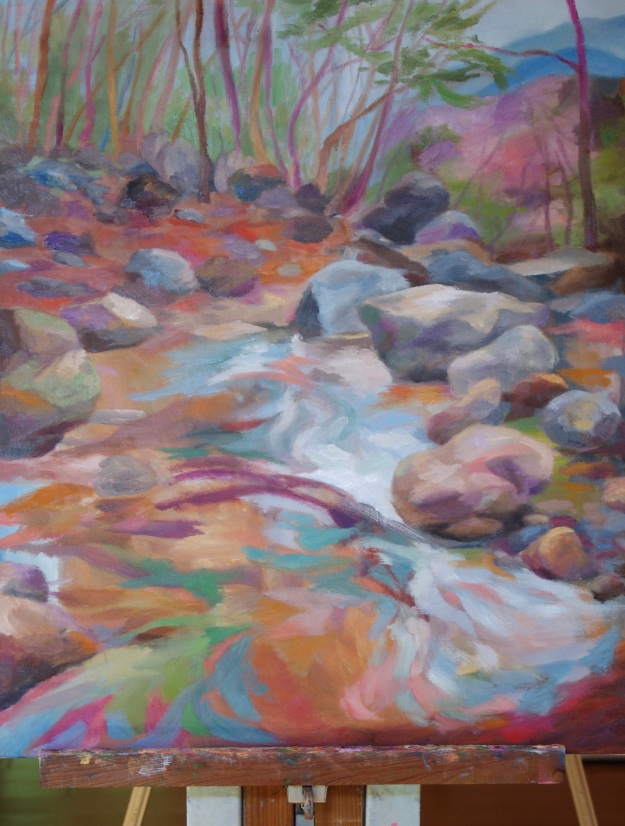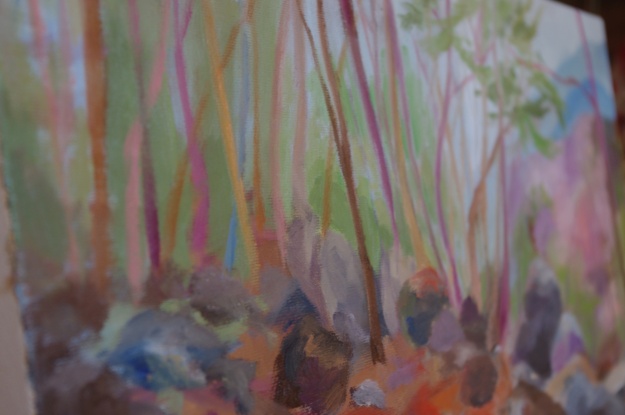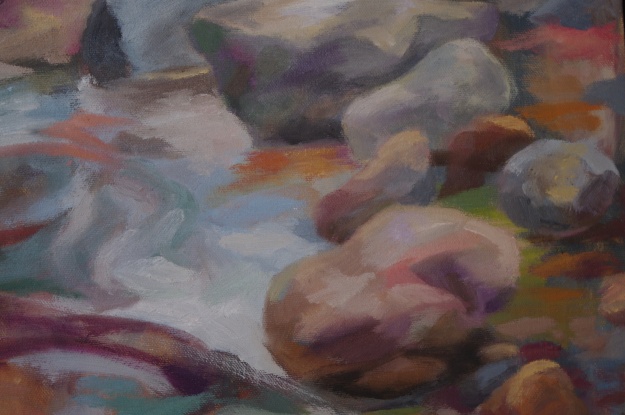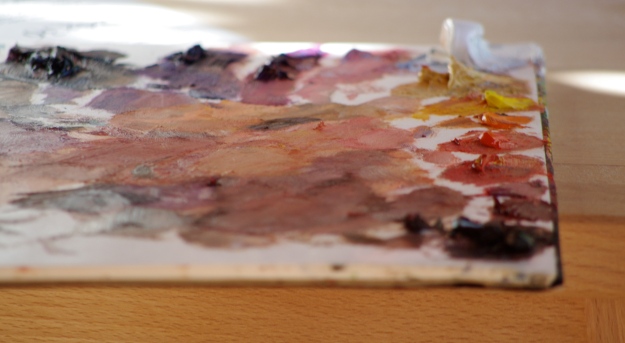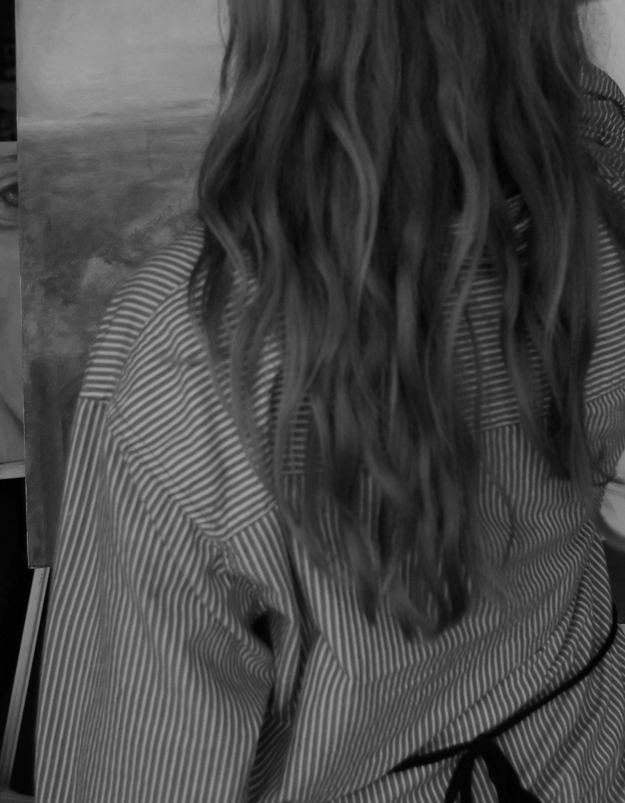Earlier this week, I introduced the first instalment of lessons I’ve come to learn about pursuing an artistic career. Here is the final part of this series:
13. “Artist” does not sound like a “real” job, which means when answering the “so what do you do” question, you’ll likely be faced with a flurry of facial expressions ranging from confusion to disbelief to worry/pity. I think because some people assume “artist” is just another way of saying currently unemployed.
Sometimes it helps to be more specific when answering this question, ex. saying you’re a printmaker, or oil painter, or illustrator. It reduces some of the ambiguity, though the pity face still makes the occasional appearance.

14. The urge will be strong to undersell yourself. Don’t. Know that if someone really loves, and wants your art, they’ll find a way to pay for it.
As an artist, I hear this a lot: “if I only had the money…” There are some people for whom this statement is true, but typically that line is used as an excuse. A polite way of saying that they may like, but don’t love, that painting, or, that they don’t see the value in spending $120 for a painting when they could buy a mass-produced printed canvas at Walmart for $30. No matter how often you hear that phrase, resist the temptation to reduce your prices – discounting may make your wallet slightly larger, but it will also decrease the individual value of your works (which is not a good thing..especially for people collecting your work).
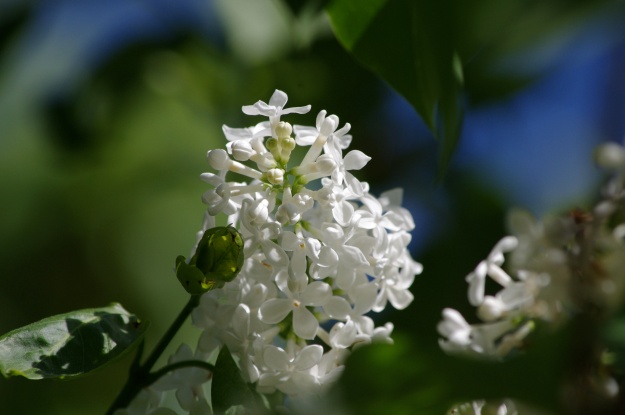
15. You’re going to get rejected…a lot. Maybe not as much as writers, but enough that you sometimes wonder if it’s worth it. Try not to take it personally, or as a sign that your work isn’t good. You don’t know the circumstances – the gallerist/jury may have a preference for abstract or conceptual works, or there may have been a flood of excellent proposals this year etc.
It helps to expect rejection – and to put things in perspective, I was just recently told of a fellow artist who applies to 30 galleries every year, and gets accepted to 3 at the most. That’s a lot of rejection letters! There’s even blogs dedicated to rejection letters (a personal favourite: Rejection Letters of an Emerging Artist). If it’s any consolation, these letters are typically very sensitively worded and encouraging. I just take it as a battle scar – a small wound you’ll be proud of in the future.

16. There’s a lot of competition. It helps to figure out what sets you apart (i.e. what you’re good at) and make that your primary focus.
17. Physically making artwork is only a fraction of what you do day-to-day (taking up at most, 20-30% of your time). The rest of the time is spent applying for grants, responding to calls of submission, researching galleries, doing self-promotion, designing promotional materials, attending openings/exhibits, thinking of new ideas, researching said ideas, etc. Unless you’re lucky enough to have an assistant or gallery representation to do some of this for you (not jealous..not jealous at all).

18. You’ll make a lot of excuses to yourself. A common one that crops up is: if I only had a larger/quieter/better located studio then I’d work better. Recognize the problem is not usually the space, it’s procrastination (which has its roots in fear). Figure out where this fear is coming from (the Artist’s Way helps with that) and you’ll find the excuses will drop away on their own.
19. Stick to a schedule, especially if you’re working from home, aka the black hole of time.
20. There will always be ups and downs, financially and creatively. Progress is not a straight line. Like a runner training for a marathon, you just have to keep at it, push through the setbacks, and appreciate how far you’ve already come.

21. Your family may be among your harshest critics. They may mean well, but it doesn’t always come across that way. I find it helps to look at all critiques objectively, regardless of the source: to determine if it’s just a comment concerning personal taste (they don’t like your choice of subject), or if it’s constructive criticism (like that skyline is slightly crooked).
22. Don’t be afraid to take a non-art related job, so long as it leaves you with enough time and energy to continue your artistic practice. You’d be hard-pressed to find a professional artist who hasn’t had to take a side job at some point. We all have to pay the bills (and student loan debt) somehow. It’s not defeat if you don’t let it steer you off your artistic course.

23. You have to believe your work is good (or at least fake it until you do believe it). Otherwise, it will be very difficult to get people to take you seriously. I mean, who would hire a lawyer who thinks they’re not a good lawyer? In the same vein, you should champion your work, or at least accept compliments proudly. By this, I don’t mean walk around saying you’re a great artist, but rather to try to strike the balance between pride and humbleness, that way you don’t come across as either obnoxious or insecure when trying to promote your work.

24. Despite the occasional harsh words, the compliments and supportive people far outnumber the naysayers. People know it’s not an easy field; they respect the guts it takes to do it anyway. Plus they probably like your work!
25. Don’t be afraid to experiment and take your art in new directions, if that means new subjects, colors, styles etc. There can be a push to “find your own style”, implying that once you’ve found it, you should stick to it. Marketing-wise, it’s a good strategy, but for creativity, it can be deadly. Personally, I just find it too constricting to approach art that way, with the added loss of being stripped of the joy of experimentation. So, experiment away! And know that style is fluid – constantly changing and evolving.

I’ll post some more painting updates next week, when the pieces I’m working on will (hopefully) be finished!

